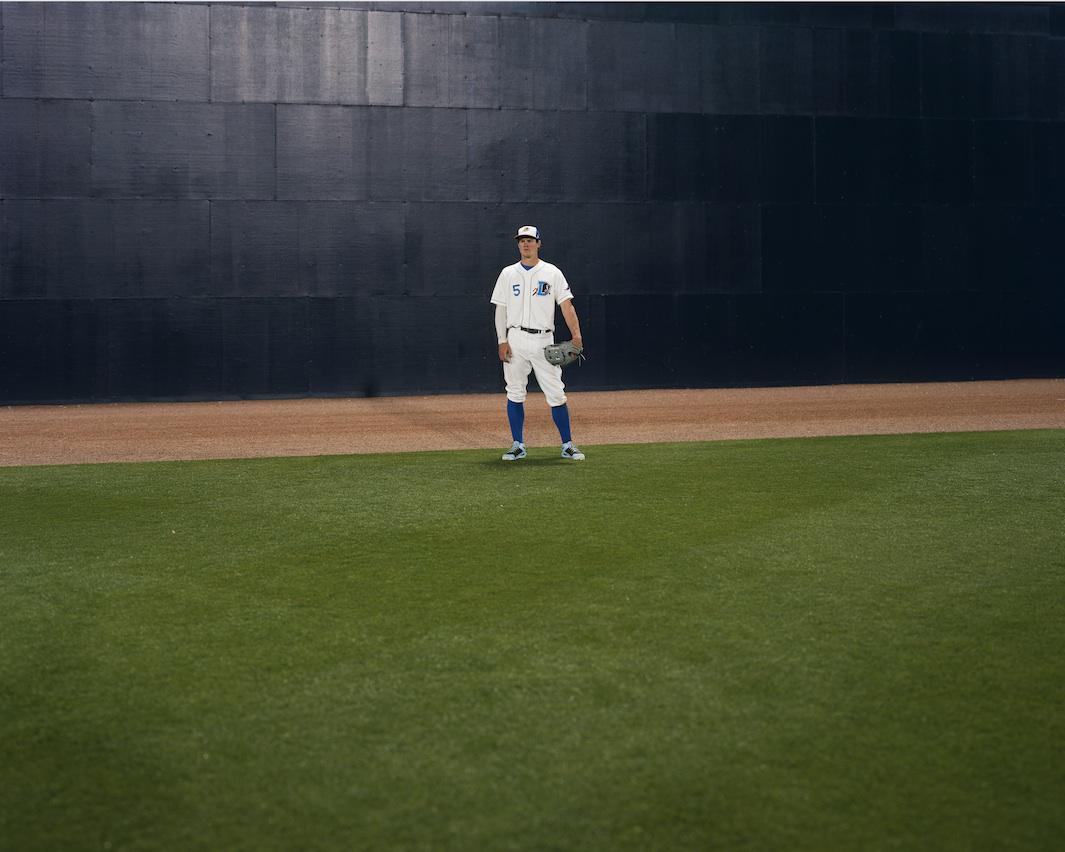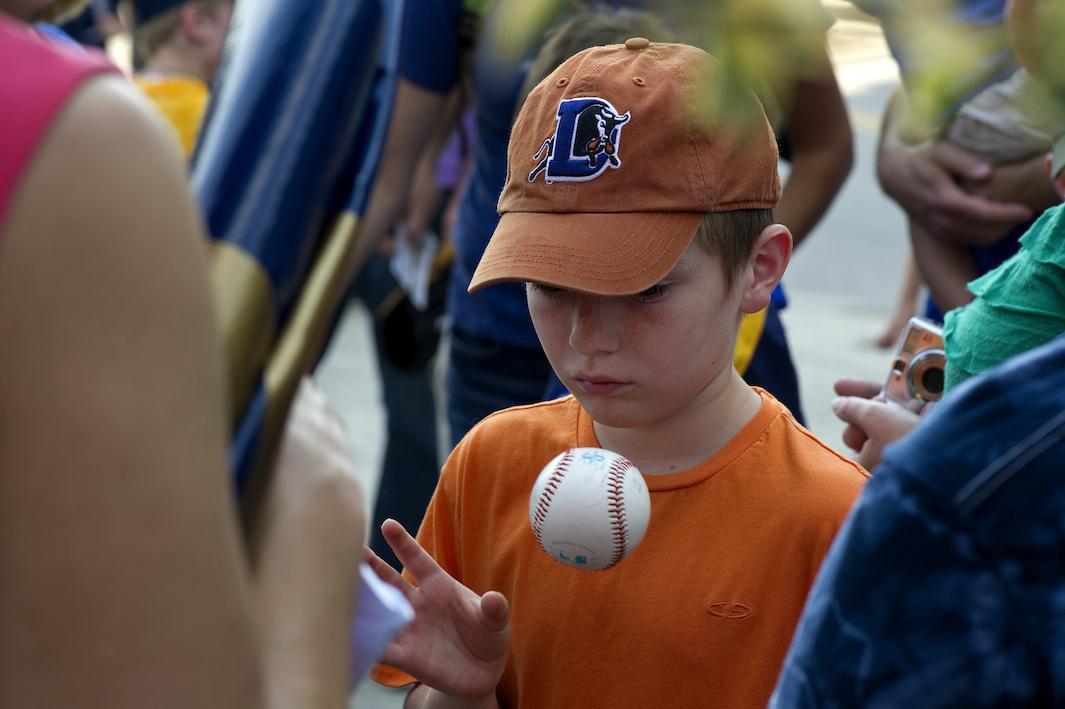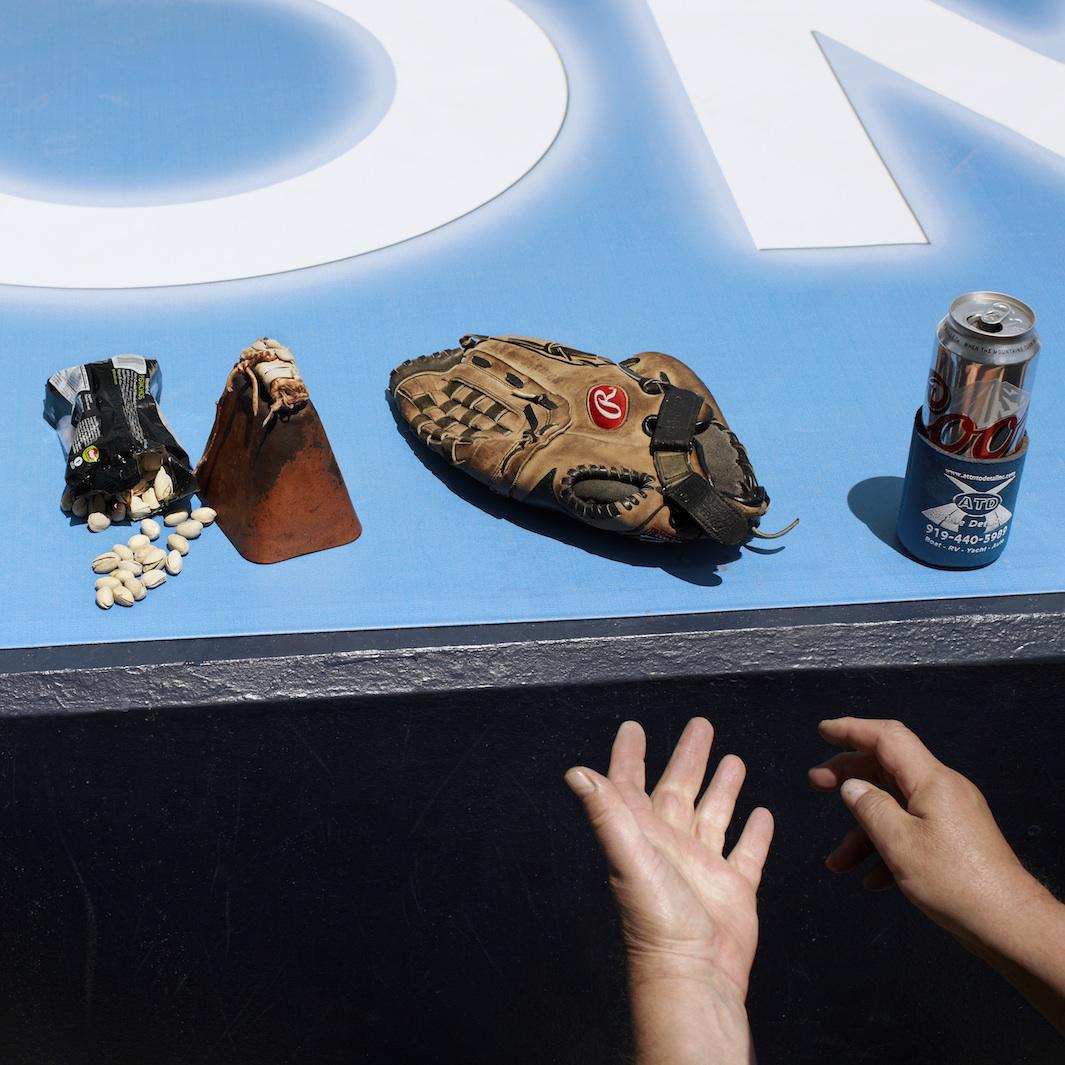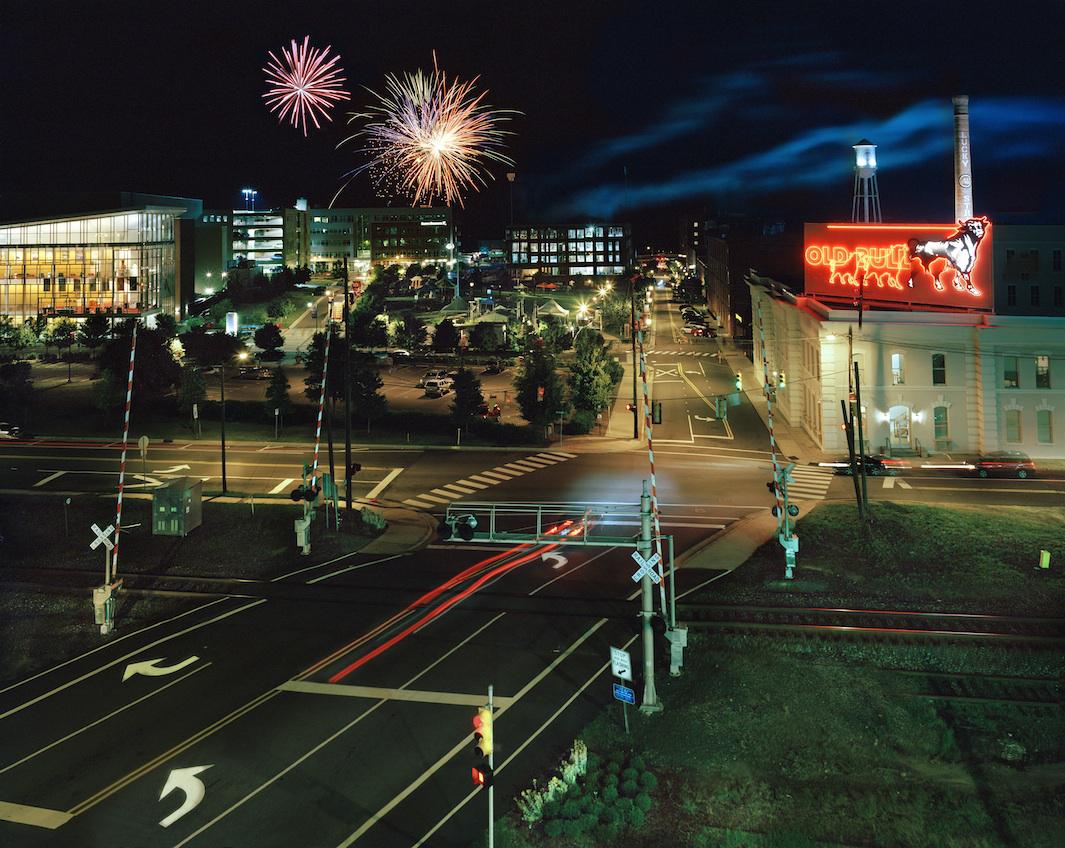Baseball is unique in the sports world. Unlike other team sports, which often constitute a battle over territory relying on brute force, baseball is typically quiet and understated. It can even be lonely. The project “Bull City Summer,” which documents the 2013 season of the North Carolina–based triple-A minor league team the Durham Bulls, explores these qualities of the game with contributions from 10 international photographers. “I think there’s more poetry in baseball than any other sport,” said Sam Stephenson, the project’s director.. “Baseball is more subtle,” he said.
“Bull City Summer” focuses on capturing that diversity and sense of community, from the players on the field to the fans in the stands. The project coincides with the 25th anniversary of the 1988 movie Bull Durham, which brought the team national and international recognition.

Kate Joyce

Alec Soth

Alex Harris
Stephenson intentionally chose photographers with no sports or journalism background to work on the project, and he didn’t give them any specific assignments when he sent them to the ballpark to take photos. “Our culture has a way of documenting baseball. It’s box scores and game reports and action photography and it’s done really well that way,” he said. “But we were intending to do something a little bit different. We think the ballpark is a unique space in American culture, and I think it takes artists to really get at some of the qualities that make it a unique space.”
The results represent a variety of photographic technologies and artistic approaches. Alec Soth used an 8-by-10 film camera. Hiroshi Watanabe shot in black and white with a medium-format camera. Leah Sobsey, meanwhile, created tintypes using 19th-century technology. “Baseball is extraordinary for the dedication to craft required and the repetition of routines. I think that’s related to art. Great art is achieved through the same dedication to craft and trial and error and just plain work,” Stephenson said.
The idea for the project came a few years ago when Stephenson was sitting in the stands on the last game of the year. “I realized that the diversity of the crowd was extraordinary. Every type of person that lived within a 30 or 50 miles radius was represented there. There aren’t many places you can say that about,” he said.

Hiroshi Watanabe

Kate Joyce

Kate Joyce
Stephenson also reflects on the changes that have occurred since the legendary movie was released. “The team in that movie was a Class A team and now it’s one step before the major leagues,” Stephenson said. “In a way that’s metaphorical for the whole Triangle and the changes that have occurred in the Raleigh-Durham area in the last 25 years. Twenty-five years ago you would have gone to the old ballpark, which was very quaint. There were lumps in the outfield, dips in the turf. Now they have a state-of-the-art facility.”
“Bull City Summer” is on view at the North Carolina Museum of Art through Aug. 31. Another exhibition at the Contemporary Art Museum–Raleigh is on view starting May 15. The book Bull City Summer: The Art of Sport will be published by Daylight Books in April.

Alec Soth

Leah Sobsey and Tim Telkamp

Frank Hunter

Alex Harris
Correction, March 4, 2014: This post originally misspelled Goodmon Field.
